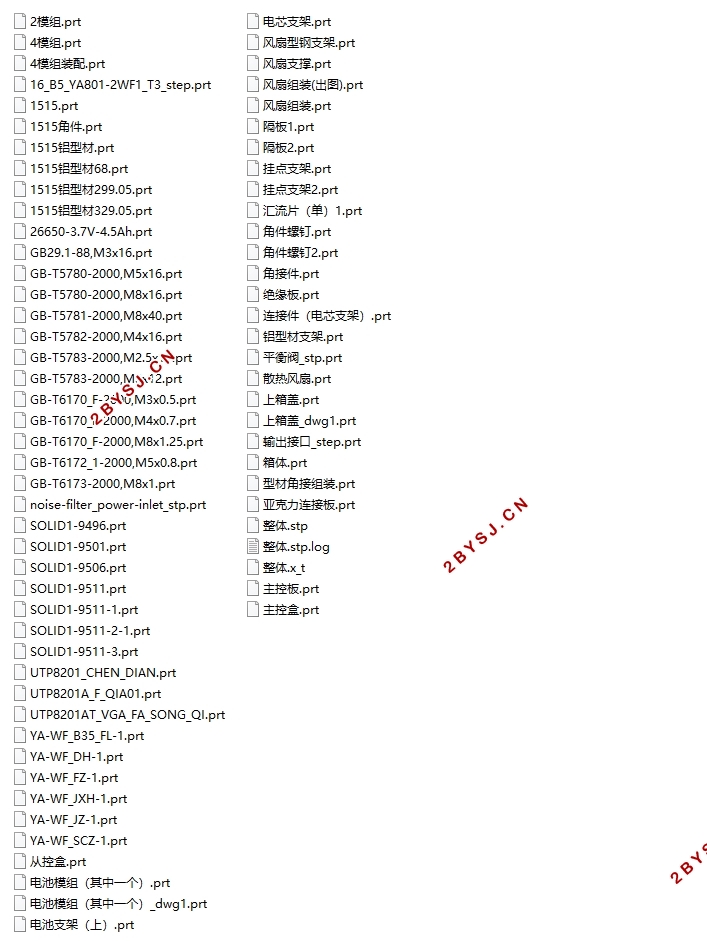纯电动汽车动力电池包设计及散热性能分析(含CAD图,UG三维图)
无需注册登录,支付后按照提示操作即可获取该资料.
纯电动汽车动力电池包设计及散热性能分析(含CAD图,UG三维图)(任务书,开题报告,文献摘要,文献综述,外文翻译,论文说明书18500字,CAD图纸8张,UG三维图,答辩PPT)
摘要
在能源和环境日益严重的趋势下,纯电动汽车是未来重点发展方向之一,而电池作为纯电动汽车的唯一动力来源,要具备高比能量和快速充电等特点。针对纯电动商用车的实际需求,本文合理设计了电池组的布局方案和机械结构,研究了电池包的散热特性,同时对动力电池系统热管理提出合理方案,保证在复杂工况下电池包的安全性与可行性。
本研究首先对纯电动汽车动力电池系统的组成及设计的基本要求进行介绍,根据所选车型的特点,确定动力电池系统的电源容量、电池单体的型号、电池的排列方式、等各项基本参数,从而进一步设计出电池包箱体,并根据设计尺寸和合适材料用三维建模软件UG绘制出整个电池包的结构。
在了解锂电池的结构和发热原理之后,对满足结构设计的电池包三维模型进行网格划分,建立电池单体和电池组的有限元模型,并完成电池单体、电池组模块的散热仿真模拟。对电池单体和电池组分别进行不同生热倍率的仿真结果分析,依据分析的结果提出更加合理科学的电池组热管理方案并改进。
本文针对某纯电动商用车的实际需求,对纯电动汽车电池包整体的结构布置、散热系统进行了设计,完成一系列设备、参数的计算和选取,并归纳总结出最佳的设计流程。对纯电动汽车动力电池系统的整体方案设计具有一定的指导价值。
关键词:纯电动车;电池包;结构设计;散热管理
Abstract
Under the increasingly serious trend of energy and environment, pure electric vehicles are one of the key development directions in the future. As the sole source of power for pure electric vehicles, batteries must have high specific energy and fast charging. According to the actual requirements of a pure electric commercial vehicle, this paper reasonably designs the layout scheme and mechanical structure of the battery pack, studies the heat dissipation characteristics and dynamic characteristics of the battery pack, and proposed a reasonable and scientific design method of battery pack thermal management to ensure the safety and reliability of the battery pack in complex working conditions.
This paper first introduces the basic requirements of the composition and design of the pure electric vehicle power battery system. According to the characteristics of the selected models, the power supply capacity of the power battery system, the type of the battery unit, the arrangement of the battery, and other basic parameters are determined. The battery pack body is further designed, and the structure of the entire battery pack is drawn by the three-dimensional modeling software UG according to the design size and suitable materials.
After understanding the structure and heat generation mechanism of the battery, the three-dimensional model of the battery pack that meets the structural design requirements is meshed, and the finite element model of the battery pack is established to complete the simulation of the heat dissipation of the battery cells and the battery modules. The battery cell and the battery pack were simulated separately for different heat generation rates. Based on the analysis results, a reasonable and scientific battery package heat management improvement scheme was proposed.
In view of the actual demand of a pure electric commercial vehicle, this paper designs the overall structural arrangement and heat dissipation system of the pure electric vehicle battery pack, completes the calculation and selection of a series of equipment and parameters, and summarizes the best design flow. It has certain guiding value for the overall design of pure electric vehicle battery pack.
Keywords: Battery electric vehicle;Battery pack; Mechanical design;Heat dissipation management
纯电动商用车相关参数选定
参数 数值 参数 数值
整车整备质量/Kg 6980 迎风面积/m2 7
满载质量/Kg 11100 最高车速/km/h 69
轴距/mm 4450 车身长度/mm 8050











目录
摘要 I
Abstract II
目录 III
第1章 绪论 1
1.1 论文研究背景和意义 1
1.1.1 论文研究背景 1
1.1.2 论文研究意义 2
1.2 动力电池系统的研究现状 2
1.2.1 动力电池系统结构布置研究现状 2
1.2.2 动力电池系统热效应研究现状 4
1.3 论文研究内容和拟采用的技术方案及措施 5
1.3.1 论文研究内容 5
1.3.2 论文研究拟采用的技术方案及措施 5
第2章 电池包结构设计 7
2.1 电池包设计要求 7
2.2 电池包基本参数的确定 7
2.2.1 商用车的相关参数的选定 7
2.2.2 电机选择 7
2.2.3 电压的选取 8
2.2.4 电源系统参数的计算 8
2.2.5 电池单体的选型 9
2.2.6 电源系统成组设计 10
2.2.7 电池单体的布局排置 11
2.2.8 电池箱体的设计 11
2.2.9 电池包的布置 12
2.3 电池包结构强度仿真分析 13
2.4 本章小结 15
第3章 电池包散热分析 16
3.1 电池简介 16
3.1.1 电池结构 16
3.1.2 锂离子电池产热机理 16
3.1.3 电池的产热过程 17
3.1.4 锂离子产热组成 17
3.2 电池理论产热量 18
3.2.1 电池特性参数 18
3.2.2 电池理论计算 19
3.3 冷却系统的选取 19
3.3.1 无冷却系统的温升 19
3.3.2 冷却方式的确定 20
3.3.3 风扇的选型 22
3.4 有限元模型 22
3.4.1 有限元应用软件 22
3.4.2 仿真的必要性 23
3.5 电池单体热力学仿真分析 23
3.5.1 模型的简化 23
3.5.2 网格划分 24
3.5.3 边界条件及求解处理 25
3.5.4 结果分析 27
3.6 电池组热力学仿真分析 30
3.6.1 几何模型的简化 30
3.6.2 网格划分 30
3.6.3 边界条件及求解处理 31
3.6.4 结果分析 33
3.7 本章小结 40
第四章总结与展望 41
4.1 总结 41
4.2 展望 41
参考文献 43
致谢 45
